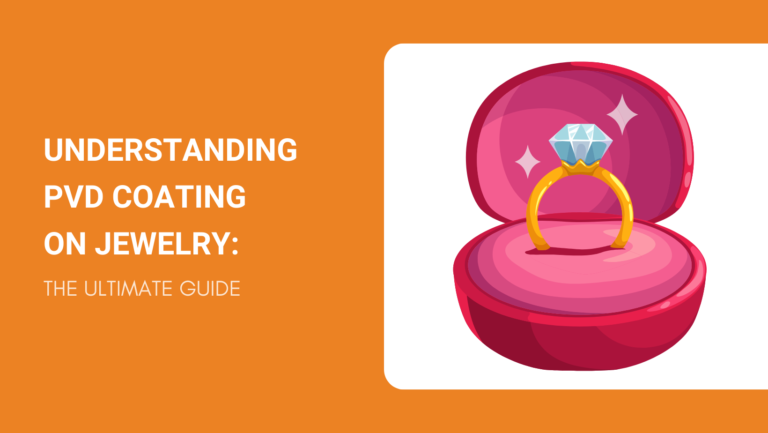Jewelry buyers want pieces that look good and last long. And, as a jewelry seller, for sure you’re aware that the best way to achieve both these features is by using PVD coating (Physical Vapor Deposition).
However, not all PVD-coated jewelry is worth the investment. As a seller, you need to know how to evaluate PVD-coated pieces.
This 2023 guide covers the meaning, benefits, drawbacks, quality factors, and types of PVD-coated jewelry. Use it to assess your inventory and give customers the sustainable, high-quality pieces they crave.
Let’s dive right in!
What Is PVD Coating on Jewelry?
PVD (Physical Vapor Deposition) coating is a high-tech process used to apply a thin layer of coating onto jewelry pieces. The process involves using a vacuum chamber to deposit metallic particles onto the surface of the jewelry metal.
This results in a highly durable and scratch-resistant layer of coating that improves the jewelry’s longevity while enhancing its visual appeal.
PVD coatings come in a wide range of colors, including gold, silver, rose gold, and black. Manufacturers and jewelry enthusiasts often love PVD coating because of its ability to protect the jewelry from sweat and regular wear, as well as its environmentally friendly nature.
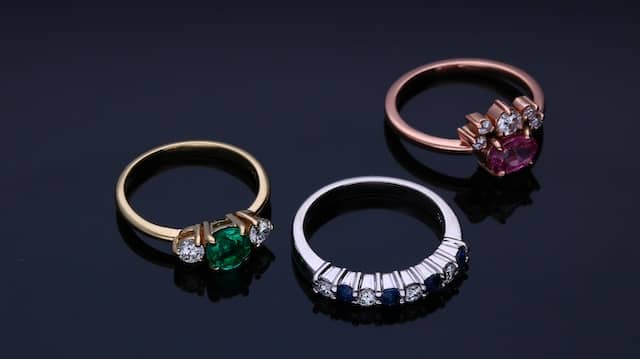
What Is the Process of PVD Coating on Jewelry?
The PVD coating process entails the use of a vacuum chamber where metallic particles are deposited onto the surface of a piece of jewelry. This is achieved through a process called ion plating. Here are all the steps of this vacuum coating process:
Step 1: The air is vacuumed so the vacuum chamber has low pressure.
Step 2: The material used for plating is placed into the vacuum chamber.
Step 3: High voltage creates a plasma discharge (negative charge).
Step 4: The coating material gets converted into vapor and starts covering the base metal in a thin layer.
Step 5: The result is a decorative and functional finish.
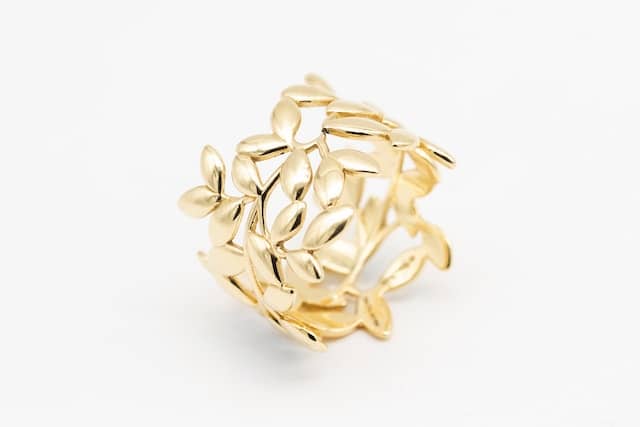
Benefits of PVD Coating on Jewelry
Here are all the advantages of using PVD plating for your jewelry:
- Durability: PVD coating provides a highly durable and scratch-resistant layer that protects the jewelry from wear and tear, making it more long-lasting.
- Thickness: PVD plating is much thicker than traditional plating, further enhancing its durability and resistance.
- Corrosion-resistance: PVD-plated jewelry is resistant to corrosion from sweat or water.
- Versatility: PVD coating allows for a wide range of color options and finishes, such as gold, rose gold, black, silver, or even blue, making it easier to customize the jewelry to match different styles and preferences.
- Sustainability: The PVD plating process is sustainable and pollution-free.
- Easy maintenance: PVD-coated jewelry requires minimal maintenance and can be easily cleaned with a soft cloth and mild soap.
- Hypoallergenic: PVD coating is non-toxic and hypoallergenic, which makes it a suitable option for people with allergies or sensitive skin.
Potential Risks and Limitations of Using PVD Coating on Jewelry
Now, let’s go over some of the risks, limitations, and disadvantages of using PVD coating on jewelry:
- Cost: PVD-gold plated jewelry is more costly to manufacture and more expensive than regular gold plating.
- Color uniformity: Achieving consistent color across a batch of jewelry pieces with complex geometry can be challenging, resulting in variations in shade and hue.
- Health risks: Although PVD coating is generally considered safe, the process involves the use of high voltage and vacuum conditions, which can pose a risk to people working in the production process.
- Slower process: Compared to other coating deposition processes, PVD coatings are produced at a slower speed.
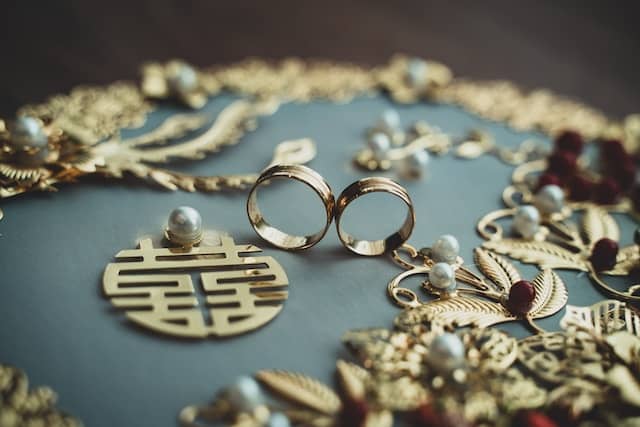
Types of Jewelry Suitable for PVD Coating
When it comes to the base material of the jewelry, PVD coating can be applied to all kinds of jewelry steels, including:
- Stainless steel
- Titanium
- Brass
- Silver
- Copper
The only thing to watch out for is the complexity and geometry of the jewelry shape, as PVD plating can often be trickier to apply evenly.
Maintenance and Care for PVD-Coated Jewelry
It’s important to properly care for your PVD-coated jewelry to maintain its luster and longevity. Here are the most crucial maintenance steps to follow:
- Use only water (distilled is best but also regular drinking water is fine) and a mild soap to wash your jewelry;
- Use a soft cloth to help clean it (no abrasive cleaning tools);
- Avoid exposing your PVD-coated jewelry to harsh chemicals, such as chlorine, bleach, alcohol, and solvents;
- Apply beauty products like perfumes, body sprays, and lotions before putting on your PVD-coated jewelry to avoid accelerated tarnishing caused by chemicals in the products;
- When not wearing your jewelry, always store it in a safe and dry place;

FAQs about PVD Coating Jewelry
Lastly, let’s take a look at some of the most frequently asked questions on the subject of PVD coating on jewelry.
How Long Does PVD Jewelry Last?
The durability and lifespan of PVD-coated jewelry depend on several factors, including the quality of the coating, the type of material used in the jewelry, and the frequency and intensity of use. Generally, well-made and maintained PVD-coated jewelry can last for decades or even a lifetime, even with daily wear.
The thickness and quality of the coating, as well as the materials used in the jewelry, play a crucial role in determining its longevity.
What Is PVD Gold?
PVD gold is a type of coating that is applied to jewelry using the PVD process of vacuum technology to deposit a thin layer of gold-colored material onto its surface.
Unlike traditional gold plating methods, PVD gold coating is more durable and resistant to wear, making it a popular option for those looking for long-lasting and low-maintenance gold-colored jewelry.
PVD gold is available in different shades of gold to match various styles and preferences. Furthermore, you can choose between different types of gold, such as 14k gold PVD coating or fake gold PVD coating.
What’s the Difference between PVD Coating and Electroplating?
PVD coating and electroplating are two different processes used to add a layer of material to an object’s surface, such as jewelry.
In electroplating, a piece of jewelry is submerged in a solution containing metal ions, and an electrical current is passed through the solution, causing the ions to bond to the surface of the jewelry. This creates a thin layer of metal on the surface of the jewelry which is prone to tarnish and fading over time.
In contrast, PVD coating involves the use of vacuum technology to deposit a thin layer of material, such as gold or silver, onto the surface of the jewelry. This creates a much more durable and long-lasting layer that is resistant to wear and fading.
Overall, PVD coating is a more advanced and high-tech process than electroplating and offers many advantages.
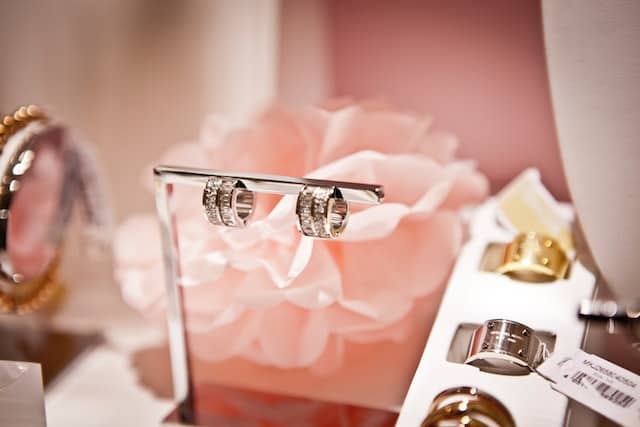
Can You Shower with PVD Jewelry?
Absolutely, yes! PVD jewelry is resistant to water as well as mild soaps, shower gels, or shampoos you might use. However, avoid entering pools or hot tubs because chemicals like chlorine might tarnish the piece of jewelry or make it lose its luster over time.
Is PVD Plated Jewelry Expensive?
Generally speaking, PVD-coated jewelry tends to be more expensive than traditional gold-plated jewelry, but less expensive than solid gold jewelry.
The cost of PVD-coated jewelry can vary depending on various factors, including the type of material used, the thickness of the coating, and the overall quality of the piece. This higher price is due to the advanced technology and specialized equipment used in manufacturing.
While it may be more expensive upfront, the long-lasting nature of PVD-coated jewelry can make it a cost-effective alternative to other types of jewelry in the long run. As a result, you can expect customer satisfaction to remain high!
Final Thoughts
In summary, PVD coating on jewelry offers a cost-effective and durable alternative to traditional plating techniques. When you’re buying wholesale jewelry for resale, you need to understand the ins and outs of PVD coating so that you can confidently evaluate the worthiness of PVD-coated jewelry and make informed decisions.
We hope that with this guide as a reference, you can rest assured that you have the knowledge needed to make smart and profitable purchasing decisions regarding PVD-coated jewelry.
And, if you’re wondering where to find PVD-coated jewelry, get in touch. We work with many jewelry manufacturers in China and can help you purchase the exact product you need at factory prices.
Best of all – we work with no upfront costs or obligations. Get your free quote, tell us what you need, and we’ll get back to you with the best offer on PVD-coated jewelry!
